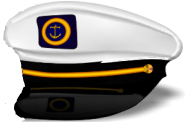Falconer's Marine Dictionary / Военно-морской словарь
Военно-морской словарь, редакции 1815 года. История создания:
The mother of all English maritime dictionaries.
William Falconer was baptized in Edinburgh on 11 February 1732. Evidence for his seafaring life is to be adduced from his long poem The Shipwreck, which he claims to be autobiographical.
Falconer's serious literary career began in May 1762, when he was in London for the publication of The Shipwreck: a Poem, in Three Cantos, by a Sailor. The popularity of The Shipwreck derives from its unique character as a technically detailed seafaring verse narrative, full of pathos and sublimity, from the pen of a professional sailor.
Falconer's reputation rests on these two major works: the Dictionary of the Marine and The Shipwreck. The former is a work of extraordinary care and scientific thoroughness, and it became the standard nautical dictionary until the end of sail.
William Falconer first published his Marine Dictionary in 1769, and it obviously filled a need because it was not merely reprinted but was actively revised on numerous occasions in the last decades of the eighteenth century. Its alphabetical format provided not just succinct definitions of maritime terminology but detailed, and sometimes tabular data on many technical aspects of shipbuilding, fitting and armament, not to mention the Royal Navys administrative and operational practices.
In the summer of 1769 Falconer agreed to sail with the East India Company commissioners who were appointed for the restoration of order in India. The frigate Aurora sailed on 30 September. (Contrary to most accounts Falconer was a passenger, not the purser). The Aurora arrived at Cape Town on 6 December 1769, sailing on 22 December. She was reported in Madagascar in April 1770. Nothing was heard of her again and Falconer can be presumed to have died in 1770.
The most desirable edition is the fourth, of 1815, as revised and greatly expanded by William Burney. William Burney was the author of several books on the naval history and biography of his time. He taught at the Gosport Naval Academy, just across from the dockyard at Portsmouth. Because of the time it took for information to trickle down, earlier editions tend to be out of date when published, but Burney (who had good Admiralty contacts) contrived to get dimensions, tables and establishments actually used by the Navy of his day. This edition is over 850 pages long and include 35 plates. This makes it a prime source for technical details and the actual practice of the navy during the classic age of Nelson.
